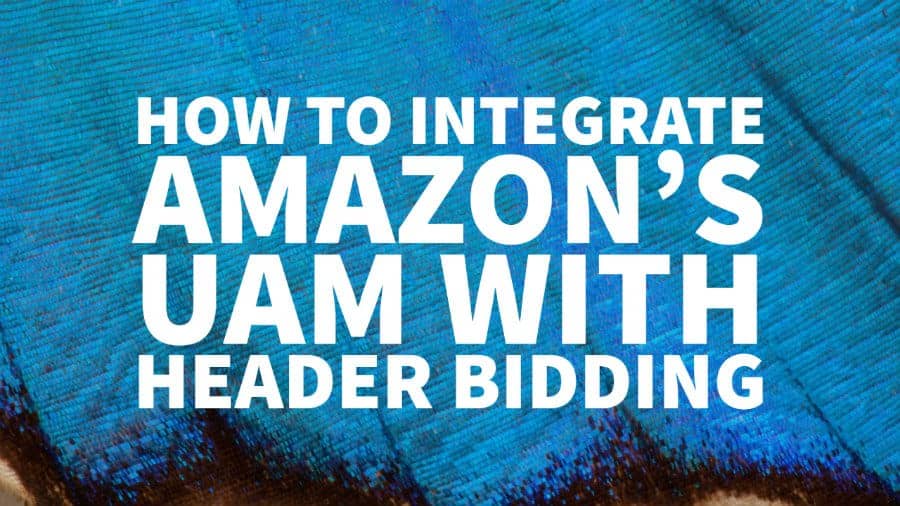This post was most recently updated on August 13th, 2020
Amazon is a worldwide behemoth that attempts to penetrate every market that it can. Branching off from its core in consumer retail, Amazon now caters to web services (AWS), video streaming (Amazon Video), consumer electronics (Amazon Echo and Kindle), digital content (Twitch, Amazon Music) and lots more.
If you haven’t heard, they’ve also begun to disrupt the advertising market as early as 2017 with the advent of Unified Ad Marketplace or UAM.
What is UAM?
The Unified Ad Marketplace allows mid-size publishers to monetize their websites via Amazon product ads and also alternative demand from various SSPs.
It is specifically marketed for mid-size publishers as there is a separate Transparent Ad Marketplace (TAM) for enterprise publishers. Aside from catering to mid-size publishers only, UAM is also invitation-only and is compatible only with publishers that have Google Ad Manager (GAM), previously known as DoubleClick for Publishers (DFP), as their ad server.
Additionally, they will only accept sites that have the majority of their traffic come from the US.
Source: https://aps.amazon.com/aps/unified-ad-marketplace/
What is header bidding?
The term is not new for those who have been in ad operations for some time. However, if this is your first time hearing this, it might help to understand this concept before proceeding.
The phrase seems a bit self-explanatory in that a complete auction happens in the header of the page using scripts. Bids are sent out at this stage to various demand sources, and the ad server collates all the responses.
Afterward, the ad from the corresponding demand source is then rendered.
Will UAM work with header bidding?
Publishers typically associate header bidding with the open source Prebid whereas UAM is Amazon’s own server-to-server header bidding wrapper. That said, UAM has simplified the integration of their solution to allow it to run side-by-side with regular header bidding.
How to integrate UAM with Header Bidding
The steps to integrate UAM are found below. Take note that these are all visible once you log in with an invited and approved UAM account. The setup page is pretty clear and helps make integration smooth.
- DFP side
- Allow Access to DFP/GAM – use your Google Ad Manager credentials to sign in on the setup page
- Select DFP/GAM Network – if there are multiple networks in your account, Amazon will need to know which one to use. Choose the one that is tied to your approved website.
- Enable API access – in DFP/GAM under Settings; there is a checkbox for this. Make sure it is ticked.
- Push line items – once the initial 3 steps above have been completed, Amazon can automatically generate the line items they need to operate. You just need to click the button on the Setup page to initiate it and wait a few hours for it to complete.
- Website side
- Add a new site – just encode the site name on the Amazon setup page and make sure it is the one approved by your representative.
- Deploy ads.txt – there are minimal lines to be added. Just be sure to use the one provided on the setup page as it contains your unique publisher ID.
- Javascript – there are several ways to integrate, and Amazon has listed them all with clear instructions here (link viewable for users with an account only). Afterward, publishers can validate their integration live or use the Amazon debug console to isolate issues.
Typically, publishers can figure out the initial setup on their own. However, most encounter problems due to a technicality on the last step, Javascript integration and debugging.
Conclusion
Want to work with Prebid, Amazon UAM, or both? We can help you with that and promise a hassle-free integration. Sign up for MonetizeMore today!
Kean Graham is the CEO and founder of MonetizeMore & a pioneer in the Adtech Industry. He is the resident expert in Ad Optimization, covering areas like Adsense Optimization,GAM Management, and third-party ad network partnerships. Kean believes in the supremacy of direct publisher deals and holistic optimization as keys to effective and consistent ad revenue increases.
